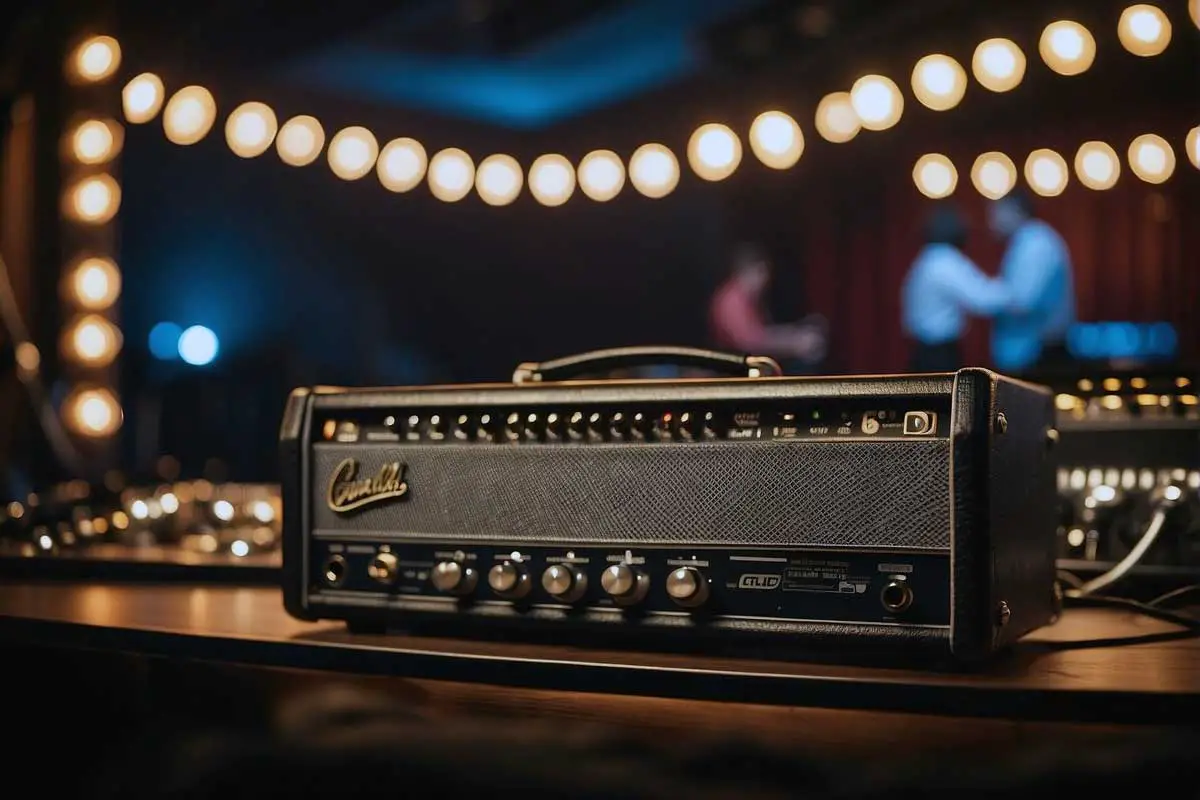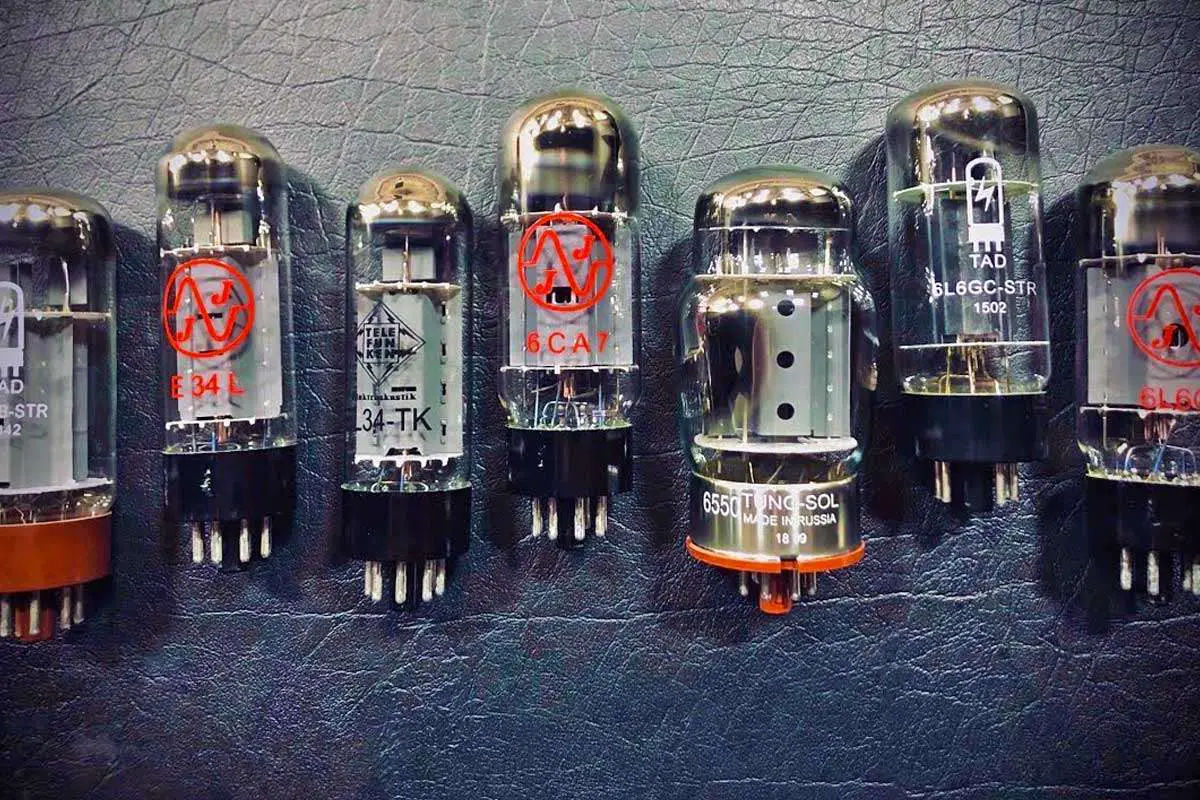When exploring the world of tube amplifiers, you might come across the comparison for 6L6 vs 6V6 power tubes. These are types of vacuum tubes used in guitar amplifiers to create distinct sounds and play a significant role in defining the amp’s character. The 6L6 tubes are renowned for their robust headroom and clarity, often found in larger amplifiers suited for genres that demand crisp, clean tones, like jazz or country music.
On the other hand, 6V6 tubes, which are the staple of smaller American combo amps, offer a sweeter, more rounded tone with a gentle breakup that’s ideal for rock, blues, or any genre that benefits from a touch of natural, warm distortion. As you choose between a 6L6 vs 6V6-powered amp, keep in mind the differences in power handling, output capabilities, and the subtle nuances in tonal quality they impart—the 6L6 being capable of delivering higher output and the 6V6 known for its charismatic vintage charm.
Understanding these differences can guide your decision-making when customizing your sound or selecting a new amp. The intricacies between the 6L6 and 6V6 tubes contribute significantly to your amplifier’s performance, shaping the dynamics and texture of your guitar’s voice. Whether you’re chasing a particular tone or simply curious about these components’ technicalities, recognizing how these tubes influence your sound is fundamental to mastering your musical expression.

Overview of 6L6 and 6V6 Tubes
When you’re exploring the realms of guitar amp tubes, two venerable powerhouses you’ll encounter are the 6L6 and 6V6. Both have left a substantial mark on the sound of electric guitar amplification due to their distinctive characteristics and roles in shaping vintage and modern sounds.
History and Development
The 6L6, a beam tetrode vacuum tube, made its debut in the mid-1930s. It was originally designed as an audio frequency power amplifier, but it quickly became the tube of choice for the high-end audio and guitar amplifiers of the time. Later, the 6L6GC became the standard for higher power and reliability. The 6V6 tube, introduced not long after the 6L6, is essentially a scaled-down version. It’s smaller and designed for lower power applications, like those found in compact amplifiers typically used for practice or in recording studios.
Physical Characteristics
- 6L6: It has a large, sturdy glass envelope with a full-size base, accommodating its higher power handling capability.
- 6V6: The 6V6 sports a smaller glass envelope and has often been used in smaller amplifiers.
Physically, both tubes reflect the engineering and aesthetic standards of their era, with clear glass, internals visible, and a robust build quality.
Technical Specifications
- Beam Tetrode: Both 6L6 and 6V6 are classified as beam tetrodes, a type of vacuum tube that is well-suited for high power audio amplification.
- Output: The 6L6 is capable of higher output power, making it a mainstay in large guitar amplifiers, while the 6V6 is known for its sweet, singing tone at lower power levels.
- 6L6GC vs. 6V6: The 6L6GC is known for its higher plate voltage and power output compared to its smaller counterpart, the 6V6S, designed for a lower voltage operation.
These technical distinctions affect the choice of tube for your amplifier and subsequently, the sonic footprint it can offer.
Sound Characteristics and Applications
In the pursuit of the perfect guitar tone, choosing between the 6L6 and the 6V6 vacuum tubes is pivotal. Each offers distinctive sound characteristics and is suited for particular music genres and applications.
Tonal Quality and Sound Signature
6L6 Tubes:
- Sound: The 6L6 tubes are renowned for their robust headroom and clear mids, making them ideal for achieving a clean, warm tone. Often found in American tube amps, these tubes deliver glassy highs and a solid low end.
- Overdrive: When pushed, 6L6 tubes produce a rich overdrive that retains definition, which is harmonically rich without losing clarity.
6V6 Tubes:
- Sound: If you’re looking for a more punchier tone with emphasis on mids, the 6V6 tubes are your likely choice. These tubes are characterized by syrupy highs and add a signature sweetness to the sound.
- Power: Although they can’t match the headroom of the 6L6, 6V6 tubes break into overdrive at lower volumes, providing that classic crunch that’s perfect for instance, in blues music.
Genre Suitability
6L6 Tubes:
- Rock Music: A great fit for rock genres because of their ability to cut through a mix with girthed mids and deliver a powerful sound even at high volumes.
- Jazz: The clean and warm tone with abundant headroom makes the 6L6 tubes a preferred choice for jazz guitarists.
6V6 Tubes:
- Blues Music: The sweet, mid-forward sound along with the earlier breakup makes 6V6 tubes a staple in the blues genre.
- Rock: For rock players craving vintage tones at manageable volumes, the 6V6 offers an appealing mix of warmth and grit.
When you select your guitar amp, taking these tubes’ properties into account will guide you towards the sound you envision for your music. Whether it’s the expansive clarity of a 6L6 or the vintage warmth of a 6V6, your choice will shape your sonic footprint in the realm of guitar tone.
Amp Compatibility and Usage
When comparing the 6L6 and 6V6 tubes in guitar amps, you’ll find differences in the compatibility and how they influence the amp’s usage. These power tubes have distinct characteristics and are compatible with certain amplifiers, influencing the overall sound and performance.
Common Amplifiers and Brands
Fender Amps: Notably, Fender often chooses the 6V6 tube for its iconic models like the Fender Princeton and Fender Hot Rod Deluxe. The warm tones and smooth overdrive of the 6V6 suit the Fender sound. On the other hand, the Twin Reverb uses the more robust 6L6 tube to achieve its higher headroom and clear, crisp tones.
Marshall Amps: Marshall has historically equipped their amps with EL34 tubes, which share some tonal qualities with the 6L6. However, models like the Marshall JTM45 have been known to effectively employ KT66 or KT88 power tubes, offering a different flavor of British overdrive.
Other Brands: Brands like Mesa and Port City (notably the Port City Pearl Amp) may use either tube, depending on the desired sound. These brands balance the richness and clarity between the 6L6 and the 6V6 to suit varying styles and preferences.
Amp Modifications and Custom Builds
If you’re considering modifying your amp or pursuing a custom build, understanding tube compatibility and biasing is crucial. Biasing is the process of adjusting the voltage sent to the tube, which can differ between 6L6 and 6V6 tubes.
- Biasing: Tubes like the 6L6 typically require a higher plate voltage and offer greater headroom, making them suitable for louder playing without distortion. Conversely, the 6V6 can be biased for a sweeter overdriven sound at lower volumes.
- Custom Builds: When building your own tube amp, choosing between these tubes involves consideration of your desired tone and volume. Remember to match the output transformer to the impedance of the tubes for optimal sound and amp performance.
By keeping in mind the specific characteristics and compatibility of the 6L6 and 6V6 tubes, you can tailor your amp’s performance to your preferences, whether you’re using off-the-shelf amplifiers or venturing into custom amp building.
Related: How To Bias Amp Tubes
Practical Considerations for Guitarists
When deciding between the 6L6 and 6V6 tubes for your guitar amplifier, it’s crucial to consider not only the tonal differences but also practical aspects like durability and cost of ownership. These factors can significantly affect your playing experience and maintenance routine.

Durability and Maintenance
The 6L6 tubes are known for their robust construction and typically longer life span due to a higher plate current and power rating. This could mean less frequent replacements and, potentially, more stable performance over time. Certain brands like Electro-Harmonix have designed their 6L6 tubes to be rugged, ensuring they withstand the rigors of extensive use and provide a balanced and articulate tube tone.
On the other hand, 6V6 tubes are smaller and have less plate current, which can affect their durability. They may require more careful handling and possibly more frequent replacements, depending on how hard you push them, especially in scenarios where you seek overdriven tones. However, modern versions, like the Electro-Harmonix 6V6GT, are designed as a low-powered substitute with improved durability.
Price and Availability
The price point between these tubes varies; 6L6 tubes generally command a higher price due to their larger size and maximum power output capabilities. For guitarists on a budget or those who prefer a more touch-sensitive feel and a clearer sound at lower volumes, the 6V6 tubes can be a more appealing and affordable option. Furthermore, they have lower power consumption, which can be a practical choice for small venues or home use.
In terms of availability, 6L6 tubes are commonly found in many high-powered amps and thus are readily available. 6V6 tubes, once dominant in lower-powered American amps, have seen a resurgence, partly due to the popularity of vintage tones and the demand for dynamic compression characteristic of these tubes. When seeking NOS (New Old Stock) tubes, which are vintage tubes never used or sold, you may find that 6L6s are generally more accessible than their 6V6 counterparts.
Valve Amplifier Tube Comparisons
Want to learn more about guitar amp tubes? Explore the nuanced distinctions between preamp and power tubes, including popular matchups like ECC83 vs 12AX7 and EL34 vs KT88, as we unravel the sonic differences that shape your guitar’s unique voice.
| Tube Types | Application |
|---|---|
| ECC83 vs 12AX7 | Preamp Tubes |
| 12AU7 vs 12AX7 | Preamp Tubes |
| 6L6 vs EL34 | Power Tubes |
| 6L6 vs KT66 | Power Tubes |
| 6L6 vs 6V6 | Power Tubes |
| 5881 vs 6L6 | Power Tubes |
| EL34 vs EL84 | Power Tubes |
| EL34 vs KT88 | Power Tubes |
| EL34 vs KT77 | Power Tubes |
| EL34 vs KT66 | Power Tubes |
| 6V6 vs EL84 | Power Tubes |
